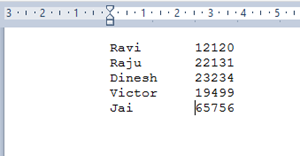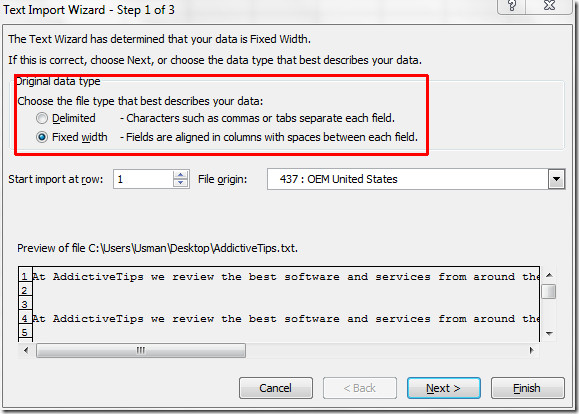

The source file may be local, it can be on a company network it can even be on a web-server. As the name implies, Data Connectors create a link between your project and an external source file. If you are unsure and would like to know more about which Excel features are not supported by text file formats, click Help for more information.įor more information about saving files in other formats, see Save a workbook in another file format.A new generalized data import mechanism we call Data Connectors was added in Origin 2019b. If you are interested only in saving the worksheet data into the new text file, click Yes. You can save other worksheets as separate text files by repeating this procedure for each worksheet.Ī second dialog box appears, reminding you that your worksheet may contain features that are not supported by text file formats. If you are certain that the current worksheet is the one that you want to save as a text file, click OK. For more information about the feature sets that are supported by the different text file formats, see File formats that are supported in Excel.īrowse to the location where you want to save the new text file, and then click Save.Ī dialog box appears, reminding you that only the current worksheet will be saved to the new file. Note: The different formats support different feature sets. In the Save as type box, choose the text file format for the worksheet.įor example, click Text (Tab delimited) or CSV (Comma delimited).

For more information, see Convert numbers stored as text to numbers and Convert dates stored as text to dates. If Excel does not convert a column of data to the format that you want, you can convert the data after you import it. Optionally, click Properties to set refresh, formatting, and layout options for the imported data.Įxcel puts the external data range in the location that you specify. To return the data to the upper-left corner of a new worksheet, click New worksheet. To return the data to the location that you selected, click Existing worksheet. Under Where do you want to put the data?, do one of the following: In the Import Data dialog box, do the following: When you are done with the steps in the wizard, click Finish to complete the import operation. Click Help on any page of the Text Import Wizard for more information about using the wizard. On the Data tab, in the Get External Data group, click From Text.įollow the instructions in the Text Import Wizard. In the Save As dialog box, under Save as type box, choose the text file format for the worksheet for example, click Text (Tab delimited) or CSV (Comma delimited).Ĭlick the cell where you want to put the data from the text file. You can convert an Excel worksheet to a text file by using the Save As command. If Excel doesn't convert a particular column of data to the format that you want, then you can convert the data after you import it. Select Transform Data if you want to load the data to Power Query, and edit it before bringing it to Excel. You also have the choice of adding your data to the Data Model. Select Load if you want to load the data directly to a new worksheet.Īlternatively, select Load to if you want to load the data to a table, PivotTable/PivotChart, an existing/new Excel worksheet, or simply create a connection.

In the preview dialog box, you have several options: In the Import Data dialog box, locate and double-click the text file that you want to import, and click Import. On the Data tab, in the Get & Transform Data group, click From Text/CSV. You can import data from a text file into an existing worksheet.

Import a text file by connecting to it (Power Query)


 0 kommentar(er)
0 kommentar(er)
